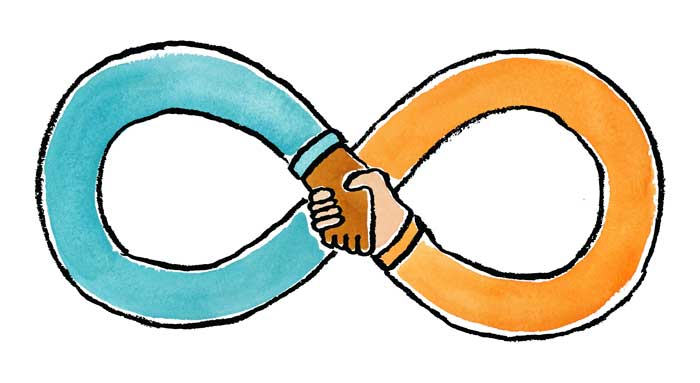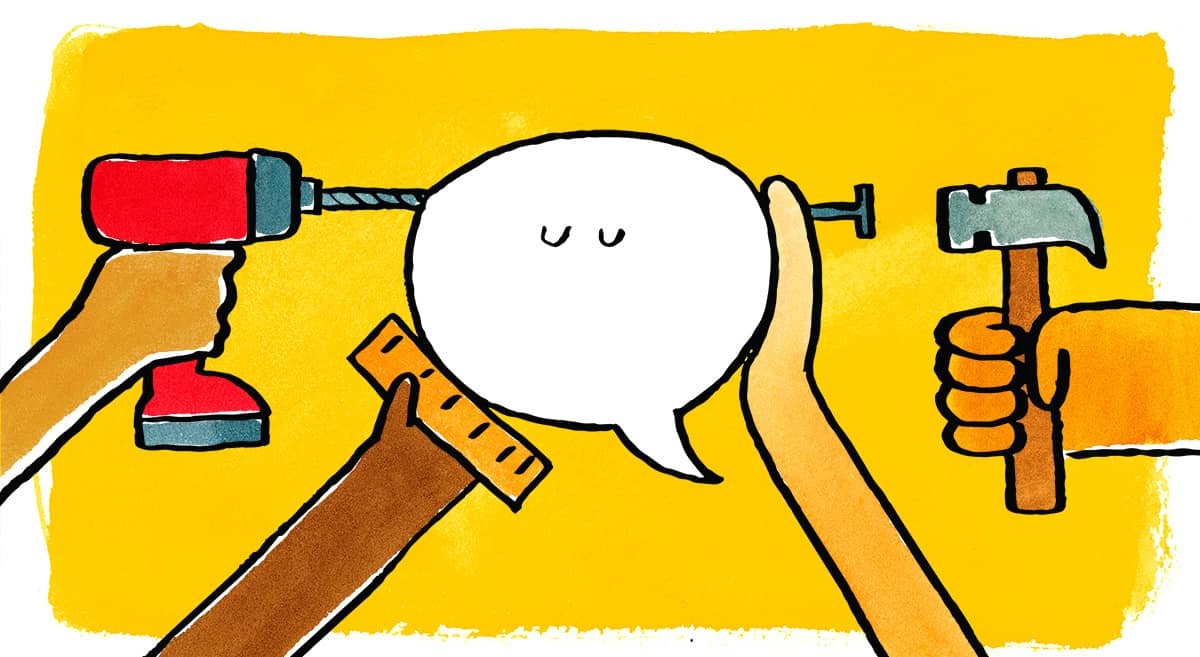
Algorithms and big data may rule the world, but recruitment is still a people’s game.
Whether it starts with a firm handshake or tropical Zoom background, most of us still get hired face-to-face. And no matter how many fancy cloud-based recruiting tools hit the market, the majority of recruiters and hiring managers still count on the good old-fashioned interview to deliver key insights into a candidate’s unique personality and skills.
Problem is, the traditional interview is notoriously bad at predicting a candidate's success once hired. Not only that, it’s also incredibly prone to hiring bias. 😬
That’s where a structured interview can save the day.
What we’ll cover:
- What exactly is a structured interview?
- Why use a structured interview process?
- How to plan and conduct a structured interview
What exactly is a structured interview?
A structured interview is a type of systematized interview that asks a predetermined set of questions in a set order.
The questions in a structured interview can be scenario-based, behavioral, or skills-based. By asking the same questions in the same order, employers can use the structured interview to reduce bias and potential legal issues that can easily enter the picture during an off-the-cuff, intuition-led interview.
Here’s how Top 10 Global HR Influencer Tim Sackett puts it:
Most hiring managers will interview each candidate a bit differently, even if it's for the same position. This has huge bias issues and can be discriminatory. ‘Oh, Tim went to the same school as me, he's male, similar age, so we kind of just talk shop. But, Mary, she went to a different school, she's female, and younger, oh, I better use the questions HR gave me.’ This is a problem!
In our guide to responsible interviewing, Tim (along with several other HR experts) makes one thing clear:
One of the biggest mistakes employers make when interviewing is failing to use a standard interview format for every position. The structured interview presents an easy way to fix that. 👍🏻
Why use a structured interview process?
Google’s former SVP of People Operations, Laszlo Bock, famously wrote in his book Work Rules! that every company should use structured interview questions based on the actual job.
And it makes sense.
Asking prospective candidates silly questions like, “Who’s your favorite superhero?” may help break the ice, but unless you’re applying for the Justice League, it’s just not a robust indicator of job suitability.
In fact, in a seminal 1998 study by the American Psychological Association researchers reviewed 85 years worth of hiring data and found that informal interviews are ineffective at predicting a candidate’s on-the-job performance.
That’s where the structured interview shines, proving to accurately predict performance 26% of the time — better than both unstructured interviews and background checks.
Here’s a quick overview of both the benefits and drawbacks of the structured interview.
The benefits of a structured interview
- Better at predicting performance.
- Clear, fair and systematic.
- Candidate competencies are measured equally.
- Less risk of discrimination and unconscious bias.
- Easier to compare notes with members of the hiring team.
- Fast, scalable and easy to replicate.
The drawbacks of a structured interview
- No room for impromptu questions.
- Potentially harder to get a sense of a candidate’s personality.
- Doesn’t completely eliminate hiring bias.
All things considered, the structured interview is an excellent way to minimize bias in the interview process and make sure you’re screening the right candidates in (not out!). As for the potential drawbacks, we’ve got some tips to help you keep your structured interviews as fun as possible for candidates.
Let’s take a closer look at the structured interview process, step by step.
How to plan and conduct a structured interview
If you’re ready to elevate your hiring strategy starting with a shiny new structured interview process, welcome to the club!
In our recent State of Diversity Hiring Report, we found that 67% of companies use structured interviewing during the candidate selection stage — by far the most widely adopted practice during this part of the process.
Here’s how to start planning your structured interview.
Step 1. Get clear on the must-have job requirements
With the right approach, preparing for a structured interview can help you sidestep one of the most common recruitment mistakes employers make: Cramming too much into your job posting’s list of requirements.
Start by reviewing the role in question to get crystal clear on the core tasks and responsibilities.
If necessary, make a list of must-have vs. nice-to-have skills so that you know which questions must be asked. For example, if a position requires analytical skills but your ideal candidate would also be a good communicator, focus your questions on just the analytical skills.
Depending on your approach, you can choose to add additional scoring categories for some of the less tangible qualities that previously would have been left up to gut feel — things like confidence, communication, and enthusiasm.
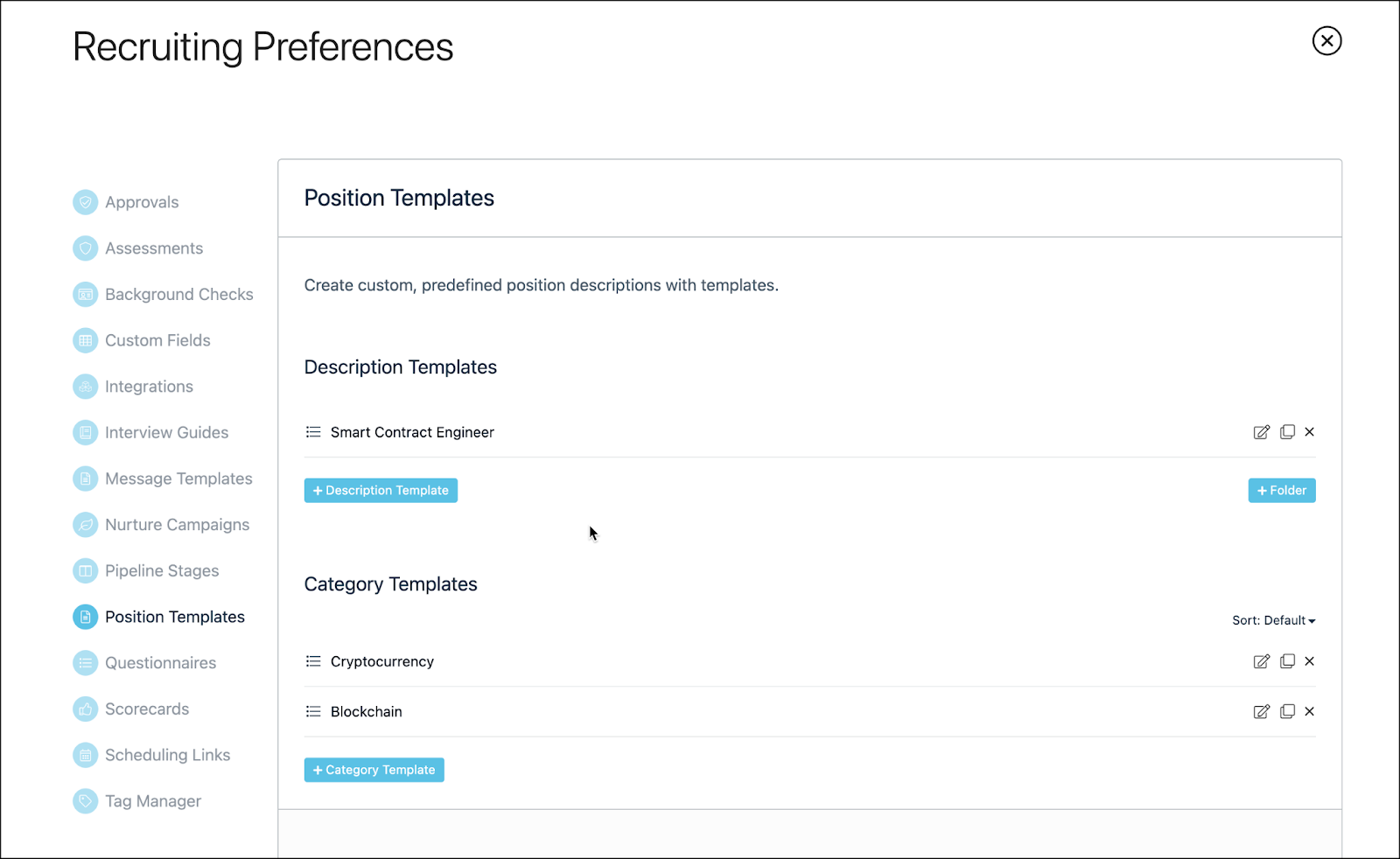
Step 2. Prep your structured interview questions
In a structured interview, questions are prepped in advance as part of a collaboration between HR and the hiring manager. And remember, structured interview questions should be directly related to the job description.
One of the beautiful things about this list of questions is that it gives you the opportunity to really think about what you want to find out and how best to ask it.
Traditionally, the majority of structured interview questions have been close-ended, relying on probing questions such as those included in the STAR method (Situation, Task, Action, and Result) for additional context.
Today, many companies choose to include open-ended questions in their structured interviews as a way to get more information on the candidate’s experiences. But be warned, too many open-ended questions can lead to some lengthier and potentially more biased interviews.
[IMAGE SUGGESTION: 4TH IMAGE ON THIS PAGE OF THE INTERVIEW GUIDE HELP ARTICLE]
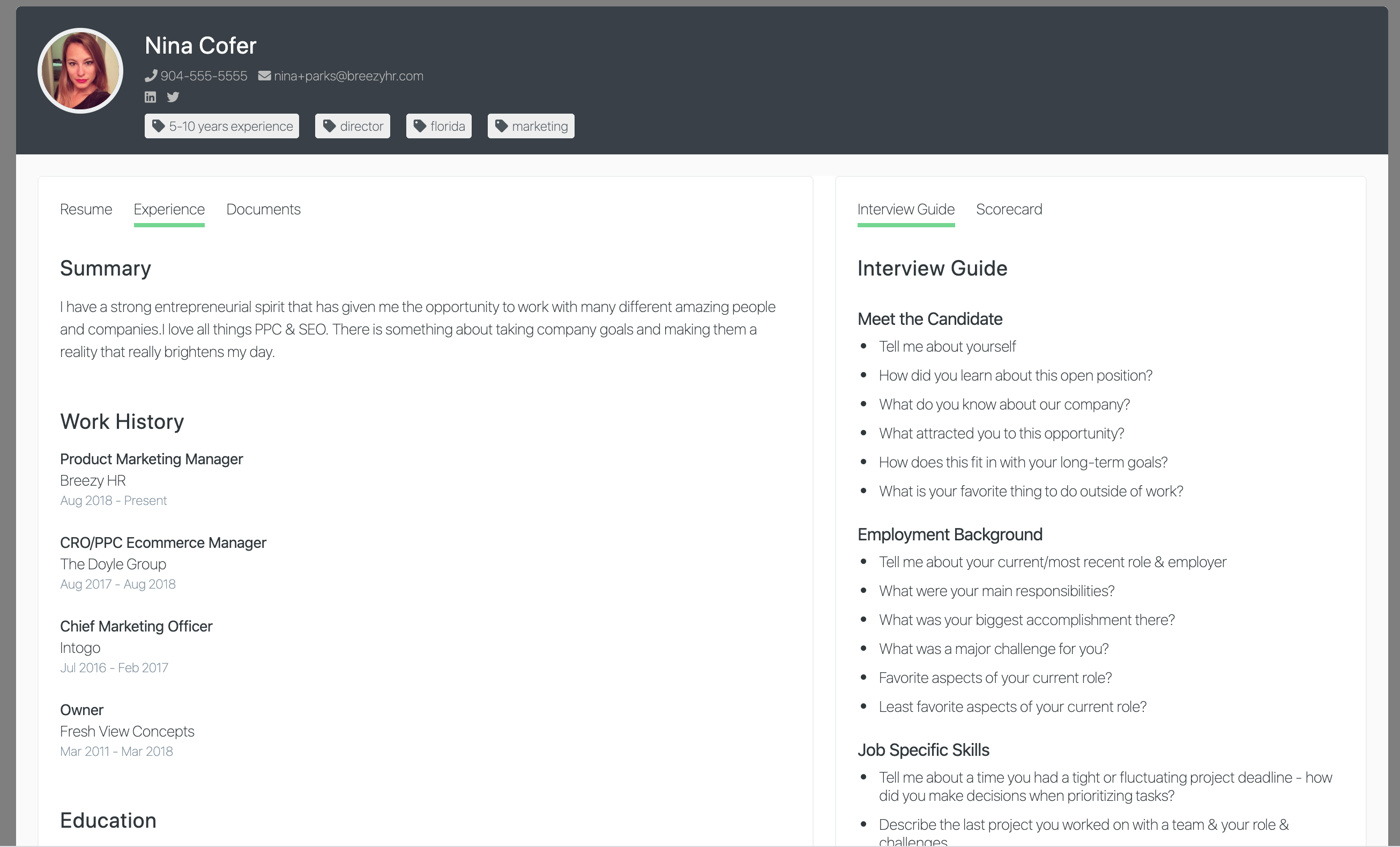
Step 3. Set your scoring scale
This step of the structured interview process is probably going to take up the most time, but rest assured — it’s worth it!
By using a consistent rating system to evaluate candidates, you’re building in a crucial layer of objectivity while ensuring that each member of your interview panel actually follows the list of predetermined questions you’ve given them.
For example, if you have a role that calls for great problem-solving skills, your interview guide might include specific, high-quality problem-solving questions, such as:
Tell me about a project where you had to manage a cross-functional team to achieve a specific goal or outcome. How did you adapt your leadership style to achieve this objective?
From here, you can use a simple 1-5 interview rating scale with clearly defined criteria for each. Here’s an example from the Society for Human Resources for how this could look:
Step 4. Conduct your interview
Now for the main event.
One of the best parts of the structured interview is the ability to keep multiple members of the hiring team on the same page.
But if you’re not careful, having too many cooks in the hiring kitchen can backfire. If a candidate is being interviewed by more than one person, don’t make them responsible for juggling multiple schedules. Make it easy for everyone by using a tool that lets candidates self-select available interview times.
The next step, of course, is to prepare.
Even with a structured interview guide, you don’t want to waltz into an interview without first familiarizing yourself with the questions and the candidates’ resume. This will help you stay present and engaged during the interview, rather than looking like you’re reading from a script.
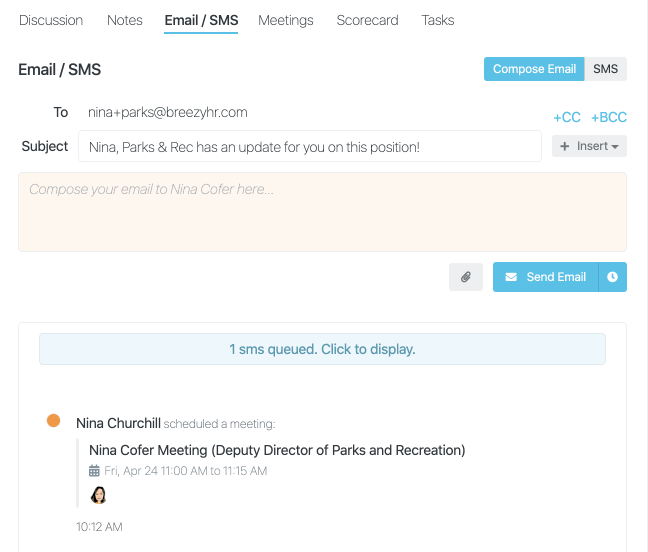
Step 5. Compare notes
Last but not least, it’s important to take notes during the interview to help decide the scores and ensure all interviewers assess candidates fairly and equally.
Of course, take care not to overdo it to the point that you’re not actively listening to the answers to each question during the interview. It’s ok to simply jot down the core aspects of a candidate’s answer and go back in later to flesh out your notes as you score.
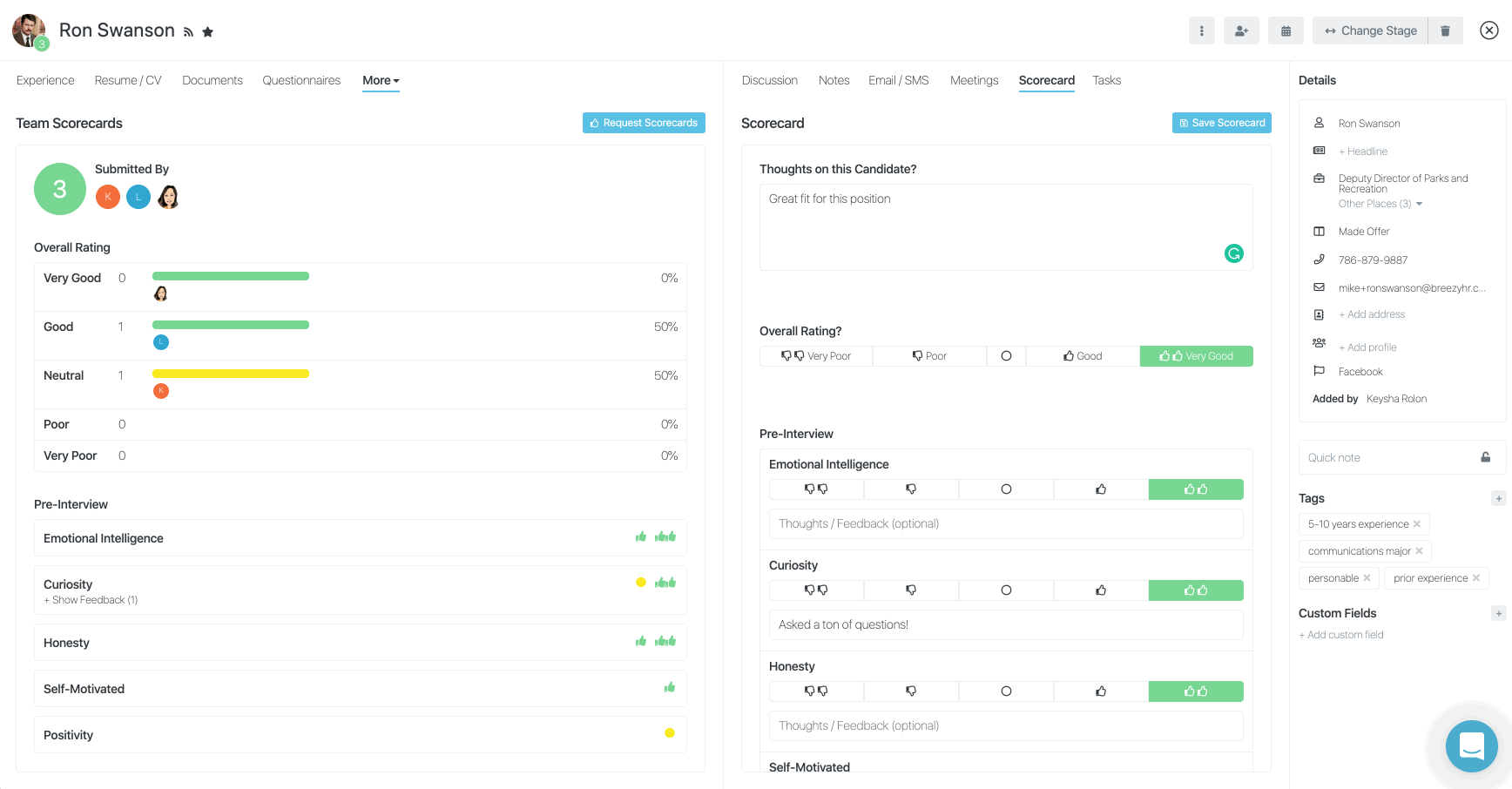
Keep your structured interviews candidate-friendly
Following a structured interview process can work wonders for preventing bad hires and creating a more diverse and inclusive hiring process. And it doesn’t mean you can’t find a few moments of levity with your candidates.
If you want to have an open, informal discussion after launching your structured interview process — no problem! All you need to do is simply build it into your process. For instance, you could hold structured interviews in the first round, then use a more relaxed approach in the second round once you’ve narrowed down your top candidates.
The goal is to maintain a fair and structured approach that helps you make fast, reliable hiring decisions … without losing that human touch.
And the right kind of recruitment software should help make it easy. Breezy comes with structured interview guides, automatic scheduling, and team scoring features baked right in. See how easy structured interviews can be with a free 14-day trial!




